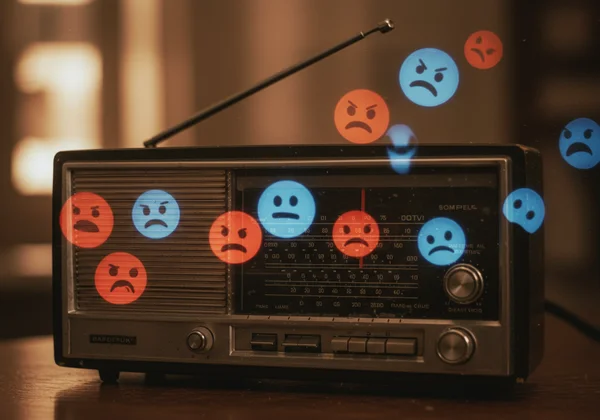述情障碍者会感受情感吗?一份揭示迷思的述情障碍测试指南
你是否曾想过,一个难以表达自己感受的人,究竟是否真的有感受?这对于许多有 述情障碍 特征的人来说,是一个常见且令人痛苦的误解。他们安静的外表或简单的“我很好”可能会被误解为冷漠或缺乏情感。但是,述情障碍者会感受情感吗? 答案是肯定的,尽管他们的内在体验远比表面看起来复杂得多。
本文将探讨 述情障碍 丰富但往往令人困惑的内心世界。我们将揭穿“无情之人”的迷思,并区分 * 体验 * 情感与能够 * 识别 * 或 * 表达 * 情感之间的深刻差异。如果你曾感到与自己的感受脱节,或者难以理解你所爱的人,本指南将为你提供清晰的认识和一条通向理解的道路。踏上这段旅程的第一步是进行一项 初步自我评估。
什么是述情障碍?理解情感处理的挑战
述情障碍本身并非一种疾病,而是一种人格特质,其特点是难以处理感受。这个词字面意思是‘词不达情’。它并非指没有情感,而是指身体的情感反应与大脑解释和表达该反应的能力之间存在脱节。想象一下你内心风暴酝酿,却无法用言语描述雷鸣、闪电或下雨。你只知道有重要的事情正在发生。
这种特质存在于一个谱系上。有些人可能只有轻微的困难,而另一些人则会经历更深层次的脱节。了解你在光谱中的位置会非常有益。进行 在线述情障碍测试 可以为你自己的情感处理方式提供初步的见解。

述情障碍症状:不仅仅是“情感麻木”
述情障碍的体验常被误解为简单的情感麻木,但其迹象更为微妙。核心的 述情障碍症状 并非没有感受,而是在处理感受方面存在挑战。
关键迹象包括:
- 难以识别感受: 一个人可能知道自己感觉“不好”或“不舒服”,但无法区分愤怒、悲伤或焦虑。
- 难以向他人描述感受: 向伴侣或朋友解释自己的情绪状态可能会觉得不可能,导致所有人都感到沮丧。
- 有限的内心世界: 他们可能很少有白日梦或幻想,更专注于生活的外部、逻辑细节。
- 关注身体感觉: 他们可能不会说“我感到焦虑”,而是说“我心跳加速”或“我胃里打结”,因为身体表现比情感本身更容易识别。
体验和表达情感的区别
这是最关键的概念。述情障碍的情感体验 是非常真实的。身体系统仍然对刺激做出反应——心脏因恐惧而剧烈跳动,胃因喜爱而颤动,肌肉因愤怒而紧绷。障碍发生于将这些身体感觉与情感标签连接起来的认知管道上。
可以把它想象成一台能接收信号(情感被感受到)但难以调谐到清晰频道(特定情感未被识别)的收音机。未被标记的身体感觉的‘干扰’可能会令人困惑,甚至痛苦。这就是为什么具有高度述情障碍特征的人可能看起来超然,而实际上他们内心被无法解读的信号所淹没。

述情障碍者能感受爱吗?连接的细微之处
这是伴侣、家人和个人自身最关心的问题之一。答案是肯定的,述情障碍者能感受到爱,但他们体验和表达爱的方式可能与社会期望不同。爱可能不会用诗意的语言或宏大的情感宣言来描述。
相反,爱通常通过行动、忠诚和实际支持来体验和表达。它可能是那个不问自来帮你修车伴侣,是每次你需要搬家时都会出现的那个朋友,或是那个始终如一地满足家庭需求的父母。他们的爱是一个动词,通过具体的关怀和承诺行为来展现。如果这与你产生共鸣,你可以 探索你的个人资料 以了解更多信息。
在关系中体验亲密和依恋
对于述情障碍者来说,述情障碍与爱 的感受通常根植于深刻的依恋、忠诚和保护欲。他们可能会在伴侣身边感受到强烈的联结和安静的舒适。虽然他们可能无法清晰表达与爱相关的复杂情感,但对联结的基本渴望以及失去联结可能带来的痛苦是真实存在的。
他们的关系依靠一致性、信任和共同活动来维系,而非激烈的情感对话。理解这一点可以将一段充满挫折的关系转变为一种对不同关爱方式的相互欣赏。
当言语难以表达时如何沟通爱
如果你正在 与述情障碍者约会,将注意力从口头肯定转移到行动上可能会带来巨大改变。关注他们如何 * 展现 * 他们的爱。他们是否每天早上为你煮咖啡?他们是否认真倾听你的问题,即使他们提供的是实际解决方案而非情感上的认可?
这些都是有效且有力的爱的表达。对于述情障碍者来说,学习将他们的行为与情感意图联系起来也能让他们更有力量。这可以像简单地说一句“我修好了你漏水的水龙头,因为我关心你”一样,将具体的行动与潜在的喜爱之情联系起来。

述情障碍者会生气或悲伤吗?探索具有挑战性的情感
就像爱一样,愤怒和悲伤等其他强烈情感也会被体验到。然而,它们往往令人困惑,并可能以意想不到的方式表现出来。如果没有标签,原始的情感能量将难以管理。
内在体验可能是一种强烈而无法言喻的骚动。这就是为什么发展情感素养如此重要——它为理解和管理这些强大的内在状态提供了一个框架。一份 在线述情障碍问卷 可以是开始这项探索的安全之地。
愤怒和沮丧的身体表现
当一个具有高度 述情障碍 特征的人 感到愤怒 时,他们可能不会将其识别为愤怒。相反,他们可能会报告头痛、下巴紧绷或突然爆发的精力等身体症状。他们的 述情障碍行为 可能表现为易怒、唐突或情感上的完全关闭。
这是因为身体正在对威胁或不公做出反应,但大脑尚未将这种感觉标记为“愤怒”。个体可能会感到莫名其妙的激动或身体不适,有时会导致突如其来的爆发,因为情绪压力在没有释放阀的情况下积聚起来。
未被识别的悲伤和哀痛:深入探究
悲伤同样令人困惑。与 述情障碍情绪 相关的未处理的悲伤或哀痛可能表现为慢性疲劳、不明原因的疼痛,或普遍的空虚感。一个人可能会觉得有什么不对劲,但却无法找出原因。
他们可能不容易哭泣,甚至根本不哭,不是因为他们不悲伤,而是因为将失落感与哭泣的身体行为联系起来的机制受到了干扰。学会识别悲伤的微妙身体线索是健康处理悲伤的关键一步。
培养情感意识:迈向更深层理解的步骤
好消息是,情感意识是一种可以随着时间培养的技能。它需要耐心、好奇心,以及愿意倾听身体信号的意愿。这段旅程始于承认感受的存在,即使它们微弱或令人困惑。
在你 完成免费测试 后,我们独特的人工智能驱动的报告可以为你提供个性化、可操作的步骤,帮助你踏上这条道路。它不仅仅是一个简单的分数,还提供了根据你的具体回答量身定制的见解。
用于情感识别的正念和身体扫描技巧
在身心之间建立桥梁最有效的工具之一是正念。正念和身体扫描 练习并非为了改变你的感受,而是为了不带评判地去察觉它们。
一个简单的身体扫描包括舒适地坐着或躺下,将注意力集中到身体的不同部位,从脚趾到头部。你只需注意任何感觉——紧绷、温暖、刺痛——而无需给它们贴上标签。随着时间的推移,你可能会开始识别出模式,例如在压力情境下胸部经常感到紧绷,从而帮助你将这种感觉与焦虑联系起来。

寻求支持:何时考虑专业指导
虽然自助技巧很有用,但与受过专业训练的人合作可以加速进展。述情障碍疗法 通常侧重于建立情感词汇和发展应对技能。治疗师可以提供一个安全的空间来探索感受并将其与生活事件联系起来。
将 我们的述情障碍测试 提供的自我评估结果带给心理健康专业人士,可以成为对话的绝佳起点。它提供了具体数据来指导治疗过程。
理解述情障碍:通往更丰富情感生活的道路
关于述情障碍最大的迷思是它代表着情感的缺失。事实是,具有这种特质的人感受深刻;他们只是缺乏一张地图来导航自己的情感版图。揭穿这个迷思为更大的自我同情和与他人更深层次的联结打开了大门。
理解是第一步。下一步是探索。如果其中任何一点与你产生共鸣,我们邀请你迈出自我发现旅程的下一步。立即参加我们免费的、基于科学的 述情障碍测试,了解更多关于你自己的情感世界。
关于述情障碍和情感的常见问题
当述情障碍者感到强烈情绪时,他们会如何表现?
当体验到强烈但未被标记的情绪时,一个人可能会表现出 述情障碍行为 的变化。这可能包括变得非常安静和退缩,表现出突然的易怒,抱怨身体不适(如头痛或胃部问题),或从事重复的、舒缓性行为。这些行为是试图管理他们无法用言语表达的强烈内在状态。
为什么我如此不擅长表达我的感受,即使我能感受到它们?
这就是经典的述情障碍悖论。你可能感受到内在强大的转变,但却缺乏词汇来描述它。这可能由多种因素造成,包括你的成长经历、神经差异(在神经发育多样性个体中很常见),或者作为对创伤的反应。一份 在线测试 可以帮助你了解你的沟通方式是否与常见的述情障碍特征相符。
述情障碍者会哭泣吗?
是的,有些述情障碍者会哭泣。然而,他们哭泣的频率可能比其他人少,或者他们哭泣是为了应对压倒性的身体感觉,而非一个明确识别的情绪。对一些人来说,哭泣可能是一种令人困惑的体验,因为他们不知道眼泪背后具体的感情原因。
述情障碍是创伤反应吗?它会影响情感体验吗?
述情障碍确实可能是一种 创伤反应。当情绪变得过于强烈或危险而无法感受时,大脑可能会发展出一种脱离情绪的防御机制。这被称为继发性述情障碍。在这种情况下,情感体验的能力仍然存在,但作为一种保护措施被压抑了。解决潜在的创伤是重新连接这些感受的关键。